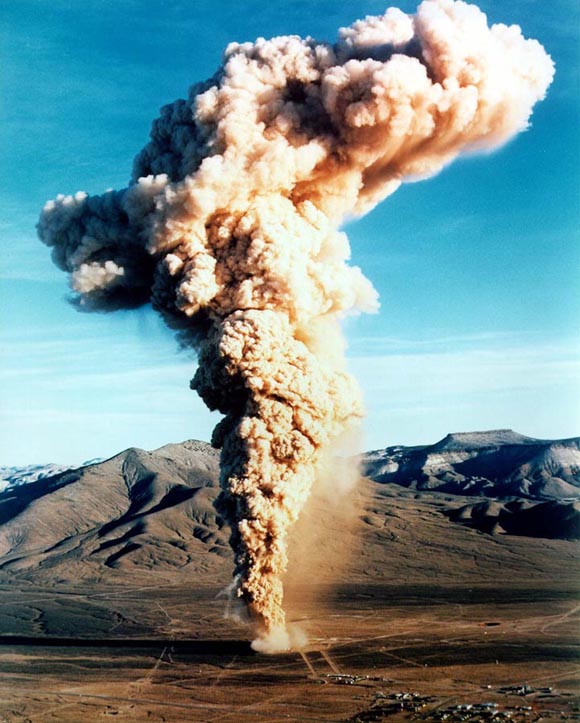The Limited Test Ban Treaty - 50 Years Later: New Documents Throw Light on Accord Banning Atmospheric Nuclear Testing
State Department Officials Pointed to Soviet "Technical Violations" but "Gentlemen's Agreement" Spared Both Superpowers Public Criticisms over Possible Breaches
Secret Pentagon Programs to Monitor French Atmospheric Nuclear Tests Worried State Department about a U.S. Violation of 1963 Treaty
National Security Archive Electronic Briefing Book No. 433
Posted - August 2, 2013
For more information contact:
William Burr - 202/994-7000 or nsarchiv@gwu.edu
|
Washington, D.C., August 2, 2013 – The United States and Soviet Union conducted underground testing that sometimes produced significant "venting" of radioactive gases and particles which crossed international borders, even after signing the Limited Test Ban Treaty fifty years ago, in August 1963. That posed potential health hazards, but also created problems for U.S.-Soviet relations, according to documents recently uncovered through archival research. To minimize the problem, both superpowers tacitly agreed to keep their disagreements secret. A State Department document, published today for the first time by the National Security Archive, indicates that both superpowers followed a tacit "gentleman's agreement against publicizing venting incidents" in order to depoliticize the issue and to avoid public criticisms of nuclear testing in general, although that was more important to Washington than to Moscow.[1]
The United States might also have violated the Limited Test Ban Treaty (LTBT) through a Defense Department program of monitoring France's atmospheric tests in the Pacific, according to the State Department in 1972. The Pentagon's objectives included tracking France's capabilities and collecting information about nuclear weapons effects, but even though State Department officials objected that the program — labeled NICE DOG — was tantamount to "participation" alongside France National Security Advisor Henry Kissinger overruled them and allowed the monitoring to proceed.
Fifty years ago, on 5 August 1963, the foreign ministers of the United States, the USSR, and the United Kingdom met in Moscow to sign the Limited Test Ban Treaty (LTBT) outlawing nuclear testing in the atmosphere, under water, and in space. On the 40th anniversary, ten years ago, the National Security Archive published a collection of documents on the Treaty's origins amid the drive for a comprehensive test ban (CTB). Today, the Archive re-posts that collection with new documents relating to the LTBT, some recently declassified, others found at the National Archives, all published here for the first time. They cover such issues as intelligence monitoring, treaty violations, and Chinese and French defiance of the treaty, and debate during the 1970s over a comprehensive test ban treaty...
The ventings posed potential health hazards, but also created problems for U.S.-Soviet relations, according to documents recently uncovered through archival research. To minimize the problem, both superpowers tacitly agreed to keep their disagreements secret. A State Department document, published today for the first time by the National Security Archive, indicates that both superpowers followed a tacit 'gentleman's agreement against publicizing venting incidents' in order to depoliticize the issue and to avoid public criticisms of nuclear testing in general, although that was more important to Washington than to Moscow.






 August 2, 2013
August 2, 2013
